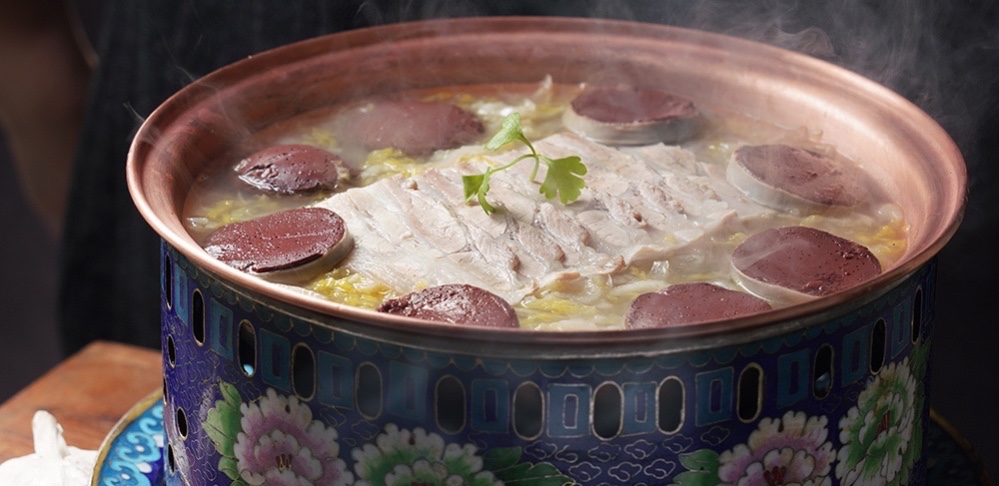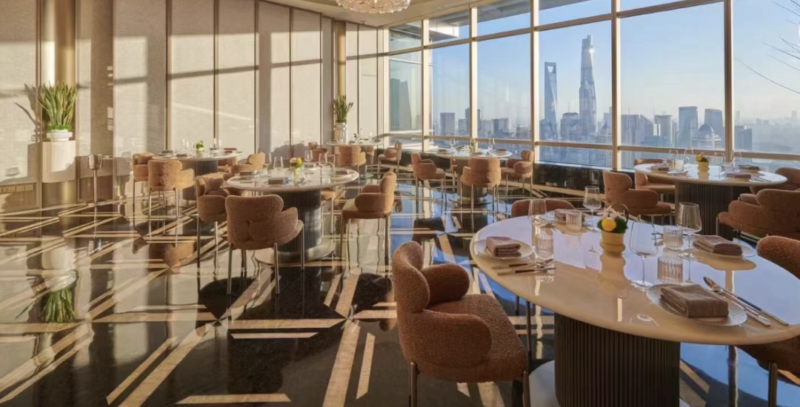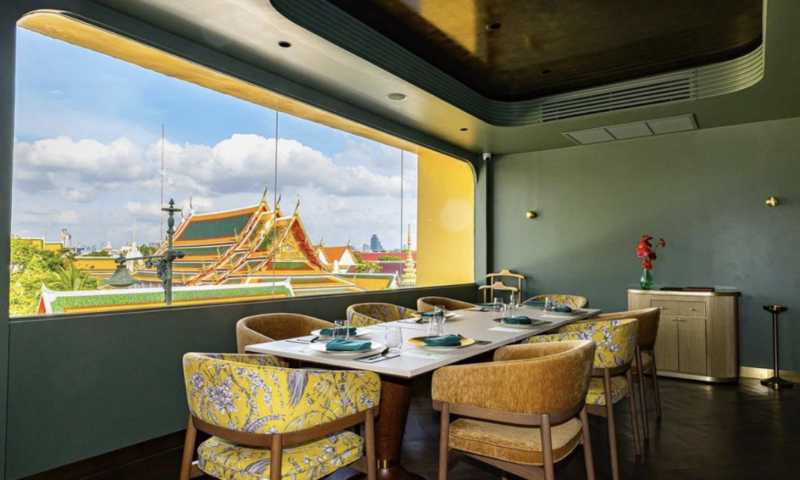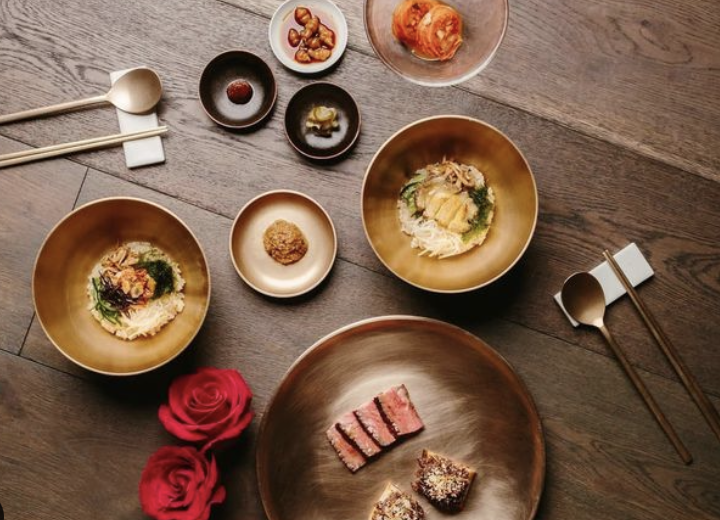What Is Your Perspective about China’s Northeastern Cuisine?
Northeastern cuisine is perhaps just like its people, straightforward, passionate and unpretentious. The climate of Northern China is too cold and dry to support rice cultivation, so the most common ingredients on its vast land are Chinese cabbage, spring onion, root vegetables such as radishes and potatoes, and beans. Besides, Northeast Chinese include a large component of meat in their daily diet, especially pork.
One of the stereotypes about Northeastern cuisine is probably being the kind of rustic comfort food when you opt for some hometown nostalgia, but that has shifted. It is now moving to the fine dining trajectory, thanks to the efforts by entrepreneurial change enablers in the industry, one being Wang Yu. Starting out as a family-run catering business, Wang Yu’s family now owns twenty restaurants and is managing a full-size enterprise with 600 employees. The secret of upgrading Northeastern cuisine is not all that complicated. Apart from thoughtful consideration of the restaurant environment, tableware and service, Wang Yu is committed to using the best local ingredients while honouring traditional flavours even when the dishes can sometimes go vastly innovative.
Fengtian Restaurant has emerged from a eatery making up for the family budget to one that now represents the best of Northeastern cuisine. The transformation is not made possible by just chasing after profits; it’s the sense of mission, as Wang Yu describes it, to revitalise her hometown and communicate the rich culture and regional ingredients through the language of her restaurants.
Inheritance is of vital importance. Wang Yu and I had travelled the world, looking for secrets of the world’s top-notch restaurants. Now Fengtian Restaurant is built, brick by brick, into what it is now.



Fengtian Restaurant’s environment

Fengtian Restaurant’s founder:Wang Yu
Many years I’ve known Wang Yu, she’s genuine, down to earth, sweet and has the kind of candidness you like from the Northerners. For one time, we went to Tokyo together to have a taste of the acclaimed sushi Michelin, Sukiyabashi Jiro. For another, after having the last supper at the now closed Swedish restaurant Fäviken, which was about hundreds of miles north of Stockholm, we missed our flight and so had to hire a taxi to take us back to the country’s capital. It was such a snowy winter night that it took almost nine hours to finally get there. She later told me that she’d seen countless snow but that night she couldn’t have her eyes shut. It was our last trip at the end of 2019, a day of unexpectedness, but warm memories are fresh as yesterday.
80% Local Ingredients
When we were in Tokyo for the gourmet trip, I didn’t know Wang was an restauranteur. She later told me that she was held back by the fact that she was doing Northeastern cuisine. For long, people would think of Northeastern cuisine as something primitive and not at all associated with refiness or delicacy. Wang wanted to change the status quo. By tracing the roots of her family’s craftsmanship, and bringing to life unique and precious ingredients grown out of the region’s rich soil, Wang has managed to ensure that at least 80 percent of the ingredients used at Fengtian Restaurant are sourced locally.
Northeastern Chinese cuisine unanimously relies on large portions and high-calorie food processing methods such as braising and deep-frying to ward off the region’s harsh winters and keep the body warm. Fried Pork in Scoop, pickled Chinese cabbage with pork and blood sausage, chicken and mushroom stew, pork and vermicelli stew… you name it. You can basically stew everything you like here.
But Northeastern cuisine would be so much underestimated if you credit it only for big portions. As an established agricultural base of China, the three Northeastern provinces are home to an abundance of quality produce such as rice, mushrooms, and fungus, not to mention its rich fishing prospects including Donggang swimming crabs, big yellow clams, mantis shrimps and Dalian sea cucumbers. Other seafood treasures like Dalian sea urchins and abalones are common options up on the menus of many up-market Japanese restaurants. Wang Yu said that she felt it’s a pity that the Northeast’s beautiful produce has to come such a long way to shine at the tables of a foreign land.

Chicken and Mushroom Stew

Donggang Swimming Crabs

Big Yellow Clams

Dalian Sea Urchins
Wang Yu and I once visited a Chaoshan cuisine restaurant named Chen Pengpeng in Shenzhen. Seeing the chefs there use natural mineral water of different PH levels to cook rice, Wang Yu asked the proprietor right away to introduce rice suppliers which she later worked closely with when she returned to the Northeast. Wang Yu frankly told me, that experience completely changed her mindset; who would have thought a Southerner could have done such a great job on a typical Northeastern product? As a Northerner, she felt the urge to take Northeastern produce to the stage centre of China’s culinary scene.
Red Bean in Egg White
Red Bean in Egg White is the heart-winning dish that helped Fengtian Restaurant acquire its fame since it opened. Very few restaurants were offering this dish at that time, sadly, because to make the dish you will only need red bean paste and egg white, and so it’s not a lucrative choice business wise. Bur Wang tried to convince the chef to give it a try by highlighting the sense of good old times and recreating the exact childhood flavours grownups were looking for. No one had ever thought of the massive success this dish brought to the restaurant.
The dish is extremely well made with a natural eggy flavour and a firm yet bouncy bite similar to that of roasted marshmallows. The egg whites are dry-whipped to a perfect structure that allows better holding the shape even after being served for a while, and the bean paste inside is tuned over a dozen times just to score the right amount of sweetness. The chef making the dish also revealed that oil temperature is the key to avoid greasiness. The process involves three times adjusting oil temperature and adding water to bring the oil to a boil before serving, realised by perfect heat control and meticulous cooking skills. A must-try dish that’s hard to be missed out on.
Long Beans and Steamed Bread is an another classic dish hailing from the northeast. The long beans are tucked nicely underneath the bread dough, allowing themselves to cook naturally with steam heat. The bread is well kneaded almost with no air pockets visible on the surface of the dough, giving it a firm structure and a moist, meringue-like mouthfeel. While enjoying the bread with the dipping sauce, I thought using a little indulgence of being carb-unconscious had never been more on the forefront of my mind.
Fine dining was the path decided by Wang Yu despite her grandparents’ family-run eatery, a decision as if by fate like the ‘return of the salmon’. Fengtian Restaurant is now on China’s National Intangible Cultural Heritage list. Wang Yu believes that brands can indeed be forward-thinking and innovative, whereas the roots and authenticity should never be forgotten. Ingredients, on the other hand, must be improved for better taste.
Fried Pork in Scoop is among many signature dishes at Fengtian Restaurant that linger on my mind. Pork slices are deep dried until crispy on the outside and soft inside, with each piece carefully calibrated to standard. Ingredients are upgraded, as locally sourced Guangxi bama miniature pork is used for its firmer, more cohesive and flavourful texture. Being open to innovative ideas, Wang Yu is not opposed to making the dish spicy. But our knowledge of Northeast flavour trail is more or less restricted to non-spicy food, and so the chef making the dish had doubts about serving chilli oil with the dish. Overall, Fengtian Restaurant’s version still tastes the way Wang Yu remembers it from her childhood and the sweet-and-sour flavour box goes naturally with fresh fruits like pineapple and strawberries.
A festive New Year’s Eve dish from the northeast, the Pickled Cabbage and Pork Stew is one of my most unforgettable dishes. Wang Yu worked with the largest local pickled cabbage supplier to keep the acidity of the cabbage consistent, and insisted blood sausages to be freshly made on a daily basis. Fresh pork blood is mixed with starch and thirteen kinds of spice for a soft, pristine mouthful. The soup base is a pleasantly sour and refreshing blend of pickled cabbage and pork belly, creating a smooth, progressive Waltz harmony.
Autumn Aubergine is a derivation of Dì sān xiān (a Chinese dish made of stir-fried potatoes, aubergine, and sweet peppers) and cooked in a method similar to that of traditional double cooked pork slices. The aubergine is finely sliced and deep fried until crisp outside and soft inside, lightly coated with sugar to strike a balance off saltiness and a touch of dry chilli to liven up the vibe. Hard to put down your chopsticks on this one.

Red Bean in Egg White

Long Beans and Steamed Bread

Fried Pork in Scoop

Signature Spring Festival Cuisine

Autumn Aubergine

Fish Head Stew

Candied Sweet Potatoes

Braised Pork with Bun

Iced Pear
Northeastern ingredients are nothing but common for the locals, but they can be highly sought-after by others at the same time. From everyday potatoes to pricey abalones and delicious flying crabs, one has to admit that the cold waters off the coast of China is indeed a hidden closet of food treasures. You will find no fancy tricks nor posh ingredients on the table of a common Northeastern household; a plain potato dish is rightly enough to satiate your hometown nostalgia.
The world of food today cannot emphasize more on ingredients. Wang Yu’s search for the gifts of the earth and the impeccable cooking techniques of the chefs have better positioned Northeastern cuisine to up a notch on the culinary ladder, even without many expensive ingredients.
Sustainability Concerns
Making good use of local ingredients is only part of the story, as Wang Yu holds her business accountable for the environment. The buns she sells at her breakfast restaurant, First Stall, are stuffed with the processed food trimmings generated at Fengtian Restaurant’s kitchen, such as Fried Pork in Scoop. Other options on the breakfast menu include fried dough stick, which is light and airy with a soft and clean texture inside like a croissant. Take a bite and you will be amazed by the sticky mochi, aromatic black sesames and melting icing sugar, or you can dip it in the soy milk like a local would do. Wang Yu’s ethos and her commitment expresses itself as she instils a whiff of creativity into the lockstep of Chinese breakfast scene.
Fengtian Restaurant is special. For Shenyang, it’s a beacon of spearheading the avant-garde for the city, and often a target for business copy by other restaurants. For Wang Yu, Northeastern cuisine is more than just big-portion dishes and dumplings, and there are so many stories waiting to be told. It has the ability to amaze diners who have come to visit and make its way to the new billboard for all Northeastern provinces.


First Stall environment

Mochi with deep-fried dough sticks


Leader From The Northeast
All major cuisines need an image shift through the efforts of industry disrupters. Wang Yu is one among them. She is a real changemaker, not just because of her tireless search for quality local ingredients and constant pursuit of refining Northeastern cuisine, but because she feels obliged to do so. She is propelled by the fire in her belly to bring the concept and dishes of Northeastern cuisine to first-tier cities, to transform authentic hometown flavours into fine dining, and to warm the hearts of downtown urbanites as it would do to the rest of us.
Everyone needs comfort food from time to time. I would be more than happy to see Fengtian Restaurant open up a new spot in Shanghai so that the magic city can have a taste of the blissful charm of true Northeastern cuisine.
Fengtian Restaurant(Wen’an Road)
📍B7, No.18 Wen’an Road, Shenyang
⏰Mon-Sun 10:00 AM-10:30 PM
☎ Tel:024-66665666
First Stall(Wen’an Road)
📍No.10 Wen’an Road, Shenyang
⏰Mon-Sun 6:00 AM-9:30 PM
☎ Tel:024-67899678











